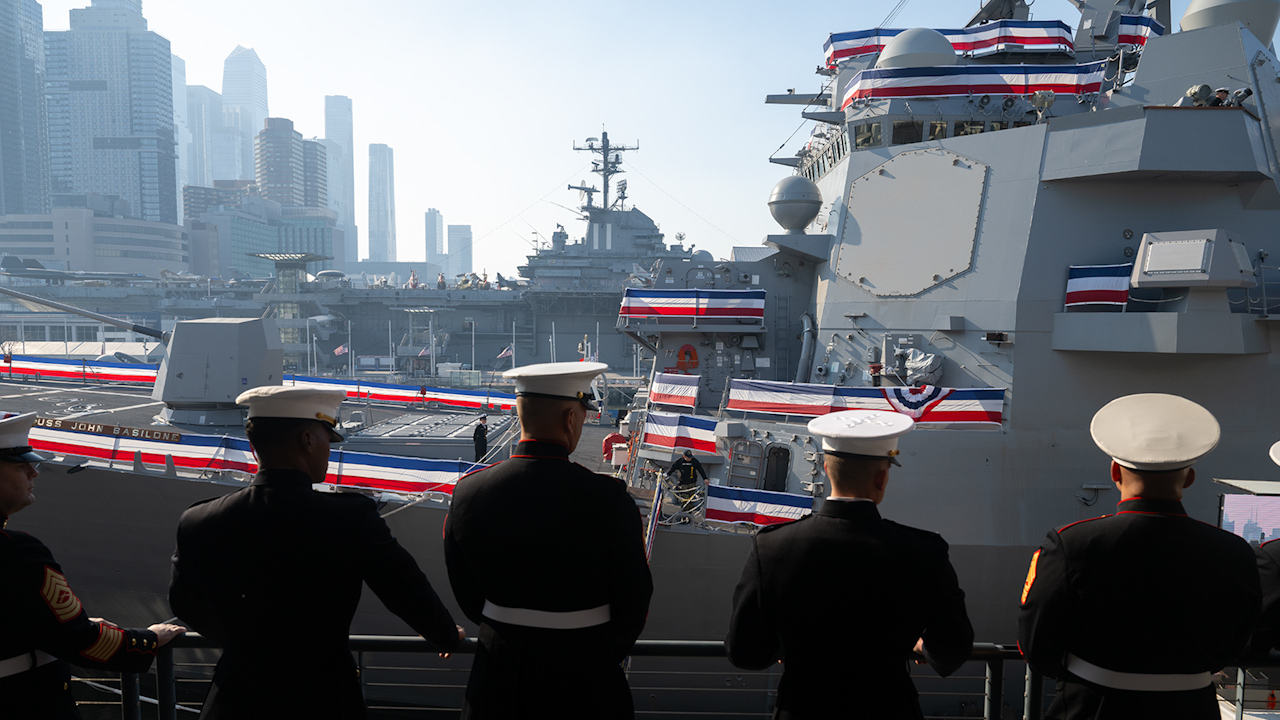
Sitrep: Peace through strength, but what does that really mean for the US Navy?

As he returned to the White House, peace through strength was the mantra reiterated by President Donald Trump.
The president did not waste any time laying down a slew of executive orders, some affecting the military, but there is also a focus on China.
This includes a recently published strategic plan for the Navy, which clearly focuses on the potential for conflict with China as soon as 2027.
Alessio Patalano, Professor of War and Strategy in East Asia and visiting fellow at the Royal Navy Centre for Strategic Studies, was on this week's episode of Sitrep – which analyses the top defence stories of the week and is available wherever you get your podcasts.
Resident expert Professor Michael Clarke said the US Navy sees China as its "main problem for the coming era".
And he said the year 2027 is when the US might see problems with Taiwan peak as it is when Xi Jinping's third term of office is due to expire.
"He always said that he wanted to settle the Taiwan issue before he leaves office," Prof Clarke said.
"That 2027 date has always looked like a deadline, but also it's a deadline… for the improvement in the Chinese navy and their preparations, such as they may be either to invade Taiwan or to more likely to squeeze Taiwan… to the point where the Western world gives it up."
Taiwan differs, Mr Patalano also pointed out, because there has been a "persistent and consistent increase in military activities which were normalised".
"When it comes to the crossing of the median line that divides the skies between Taiwan and China, we're talking about hundreds of planes crossing it on a weekly basis," he said.
"We're talking about dozens of ships going around Taiwan.
"That's been normalised because it creates a bigger space whereby you can more quickly mobilise your forces and everybody else on the other side stands on their toes thinking, okay, is this the moment they are pulling the trigger?"
"When you see so much more military activity, it's a lot more complicated to make a judgement call."
So why does the US care? Well, it is China's ambition to become a world-leading Navy by 2047 – something the US would not want to happen.
"President Trump, from what he is reported to have said about Taiwan to Xi Jinping, may be less than resolute over the defence of Taiwan itself," Prof Clarke said.
"Even though they are aware of a broader game that they're going to play.
"The American Navy will make sure that the Chinese Navy doesn't achieve its objective… by the 2040s, of becoming the dominant global Navy.
"They wouldn't allow that.
"But they may not be able to stop them creating so much naval pressure around Taiwan that the Americans could really stop it unless they're prepared to go to war over it, which they probably aren't."
You can listen to Sitrep wherever you get your podcasts, including on the BFBS Forces News YouTube channel.









